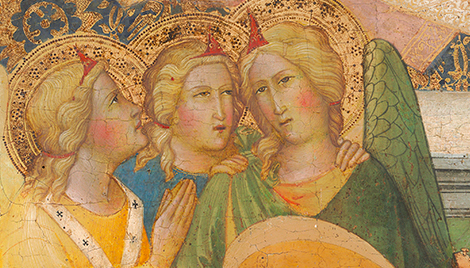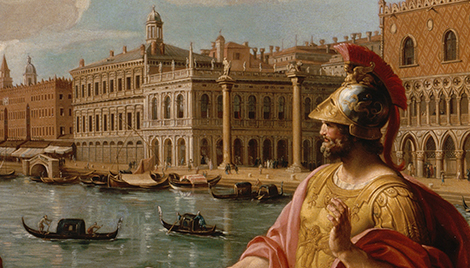Transitioning to a Digital World: Art History, Its Research Centers, and Digital Scholarship
Diane M. Zorich
June 2012
Executive Summary
In 2011, the Samuel H. Kress Foundation, in conjunction with the Roy Rosenzweig Center for History and New Media at George Mason University, sponsored the first ever survey of the art history community to clarify its perceptions on the role of digital scholarship and its future impact on the discipline. Through a combination of interviews and research center site visits, the following topics were explored:
- The role of art history research centers in supporting digital art history
- Challenges in art history teaching, research, and scholarship in the digital realm
- Access to digital tools, services, and resources needed by the discipline
- Digital pedagogy in art history
- The role of digital publishing in the discipline
- Current and potential partnerships
- Sources of innovation in the field
- The role of funding agencies in supporting digital art history
The findings reveal disagreements in the art history community about the value of digital research, teaching, and scholarship. Those who believe in the potential of digital art history feel it will open up new avenues of inquiry and scholarship, allow greater access to art historical information, provide broader dissemination of scholarly research, and enhance undergraduate and graduate teaching. Those who are skeptical doubt that new forms of art historical scholarship will emerge from the digital environment. They remain unconvinced that digital art history will offer new research opportunities or that it will allow them to conduct their research in new and different ways.
The community’s ambivalence about digital art history also carries into its perception of art history research centers and their role in fostering digital scholarship. These research centers are highly valued, and many professionals feel they should use their respected position in the community to actively promote and support digital art history. However, no one believes these centers have the capacity or desire to transform into purely digital art history research centers, nor do they want them to do so. This raises a number of issues about who can provide the supportive environments needed to create and maintain digital art history projects and what effect will this have on promoting digital scholarship within the discipline.
Many factors account for the current marginal status of digital art history. Among the most important are perceived threats to existing research paradigms and behaviors, outmoded reward structures for professional advancement and tenure, insufficient capacity and technology infrastructure, the absence of digital art history training and funding opportunities, problems with digital publishing, and the need for multidisciplinary partnerships to develop and sustain digital art history projects. Also contributing to this marginalization is an absence of dialogue among the community’s leadership – its professional organizations, funders, thought leaders, and research centers – about what art history will be in the 21st century, and the role digital art history plays in that scenario.
These factors are examined in the context of trends, issues, and research from other sectors. The evolving relationship between digital humanities and traditional humanities centers is explored for the changes it may portend for art history and its research centers. New efforts that promote open approaches to image collections are considered for the role they might play in easing roadblocks in image research and online publication. The changing notions of publication in the online world, and the impact of new social media platforms, are considered for the opportunities they offer in expanding and transforming scholarly research online.
Finally, recommendations are made for future work that can clarify the status of digital scholarship in the discipline and its research centers, and chart a course for advancing it further in the field. More research is needed on digital humanities training for art historians, the evolving role of art libraries and art librarians, comparative studies of digital art history outside the US and UK, art historians’ changing work habits, and the evaluative criteria for digital scholarship that are emerging in other communities.
About the Author
Diane Zorich is the Director of the Smithsonian’s Digitization Program Office (DPO) and leads an expert team in digitizing Smithsonian collections to maximize their impact for the public. She oversees mass digitization, 3D digitization, and assessment activities that develop and improve digitization processes across the Institution.
Before joining the Smithsonian, she was a consultant with over two decades of experience in information management, digitization, and digital policy in cultural organizations. She has graduate degrees in anthropology and museum studies, and hails from Chicago (with stops along the way in New York City, Boston, San Diego, and Princeton).
Copyright Information
This work is licensed under a Creative Commons Attribution 3.0 Unported License. Copyright is retained by the Author.





